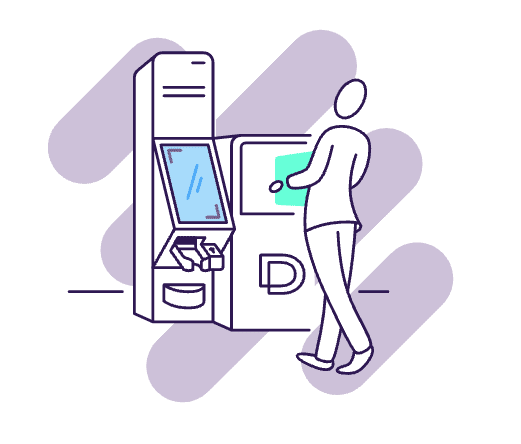Insight / Blog
The rise of the micro-shipper: an untapped opportunity for posts

Summary: Micro-shippers are a growing audience segment that can be a lucrative opportunity for posts.
Recommerce has grown exponentially over the last few years and is predicted to account for almost 15% of the apparel, footwear and accessory market by 2024. In addition, second-hand fashion is expected to grow 127% by 2026, surpassing $200 billion in global sales.
Growth in recommerce directly correlates to an increase in C2C sends. For example, Yodel revealed that its C2C delivery service increased by 132% since July 2022, with the carrier delivering almost 600,000 parcels weekly. But more than increasing volume, the rise in recommerce has created a new segment for carriers and posts to take advantage of: micro-shippers.
Micro-shippers are SMEs or C2C sellers who typically send a few parcels daily, usually selling through recommerce platforms like eBay or Vinted. While that’s a lot for one person, their volume is usually inconsistent, and insufficient to merit any warehousing investment or a pickup from a carrier. Thus, these sellers use the same services consumers use, like post office counters or parcel shops, to send their packages. But with more and more people coming to these locations with an armful of packages to send, the customer experience is at risk.
By targeting the micro-shipper audience, posts can tap into a valuable growing market segment, while improving overall customer experience. InPost is a great example here, as the launch of its locker-to-locker delivery for C2C sends saw 45% of users repeating usage, and 25% with three or more uses within the first two months, resulting in a volume cap to maintain service levels. The demand for automated and self-service C2C sends for micro-shippers is clear – it’s up to posts to not let the opportunity pass them by.
Why micro-shippers don’t fit into current post services
Queues at post offices are usually able to accommodate customers with one or two parcels or letters at a time. This allows staff to process transactions quickly, keeping the line moving and improving customer satisfaction. However, micro-shippers do not fit into this structure. Having multiple parcels at a time, they spend longer at the counter processing their deliveries. This increases the queue length and waiting time, which is a killer for overall customer experience, and an issue which post offices are already sensitive to.
Delays caused by micro-shippers will be reoccurring experiences for posts too. Micro-shippers consistently frequent their local branch. This results in a consistent slowdown for other consumers and can encourage negative reputations around specific locations if people believe the branch is always busy, potentially turning away other customers.
It’s also not a great experience for the micro-shippers, whose income from marketplaces depends on shipping quickly and reliably, and who often have primary jobs and other responsibilities taking up much of their time.

So, there’s a gap in the market between pickups offered to businesses and the in-store experience consumers use to send the occasional package, and micro-shippers are falling into it. Providing micro-shippers with dedicated solutions to bridge that gap is actually a great opportunity to improve overall CX in post offices and capture a growing source of volume, becoming an indispensable part of the recommerce ecosystem.
Some services have already attempted to capture this audience, such as the Post Office’s Drop & Go service, which allows sellers to complete an online manifest of parcels and drop the parcels off at a designated counter without queuing. However, it cannot be offered in all branches because of space restrictions. Thus, the same issue remains in smaller branches which are most likely negatively affected by micro-shippers.
So, what can posts do to secure micro shippers?
Can posts secure micro shippers through collection services?
Royal Mail currently offers a Parcel Collect service, which turns their USO of having to reach every address in the UK at least once a week into an advantage by offering to collect parcels from doorsteps simultaneously. It’s a smart move that could turn Royal Mail into postal leaders – particularly within returns.
In our recent webinar with Royal Mail, Head of Parcel Collect Rachel Winham talked about targeting this service towards the micro-shipper segment. Royal Mail will need to add multiple parcel functionality to successfully target this segment, as the current Collect Service requires each package to be individually booked online. At the minimum, micro-shippers would need options for bulk collection and processing. Otherwise, the service will offer little time-saving benefits over queuing at a counter.
Thinking more about micro-shipper needs, Royal Mail could also implement a subscription-based service, where micro-shippers can book routine weekly collections, or when they hit a minimum parcel threshold. This would make micro-shippers more likely to remain loyal users, while posts could collect data on how often and when micro-shippers commonly use the service.
Self-service and branch automation as easy winners for micro shippers
As well as collection options, automation and self-service solutions could help service micro-shippers in post offices. Many posts are already looking at ways to automate various postal functions, including self-service. For example, Royal Mail has a self-service counter where users can weigh parcels and purchase labels, while Austrian Post is planning to roll out 16 new self-service branches to meet consumer demand after the success of their first 2 branches. These self-service options are designed to improve efficiency and customer experience.
But there’s one downside: not all self-service solutions work for all spaces. Some self-service solutions, like Royal Mail’s self-service counter, are only applied to larger branches where they have space to host it. To capitalise on the micro-shipper opportunity, posts need accessible services that fit into all available spaces. This is where products like drop-off kiosks shine.
Kiosks are one of the best solutions for micro-shippers because of their adaptability. Whether they take the form of a traditional drop-off kiosk, a hole in the wall or even our new lightweight countertop kiosk, a variation will work with even the smallest spaces. Paired with a simple and intuitive user interface, where customers can drop parcels off in 60 seconds or less, they can reduce queue and wait times in store while reducing staff demand and improving overall customer satisfaction scores.
To discover more about kiosks, and how they achieved a 2.8/3 customer satisfaction rating for one US retail/logistics business, download our kiosk case study for free.

Related articles
Convenient and sustainable: developing an out-of-home delivery strategy
Sustainability has become a key decision factor for retailers - here's how carriers can stay ahead with an out-of-home delivery strategy that’s both sustainable and convenient for consumers
5 Changes We Predict in eCommerce Delivery & Returns in 2024
Our predictions for 2024 in ecommerce delivery and returns, plus a roundup of our 2023 predictions.
What are the different types of self-service parcel kiosks?
We explore the different types of self-service kiosk, outlining the pros, cons and best use cases for each.













